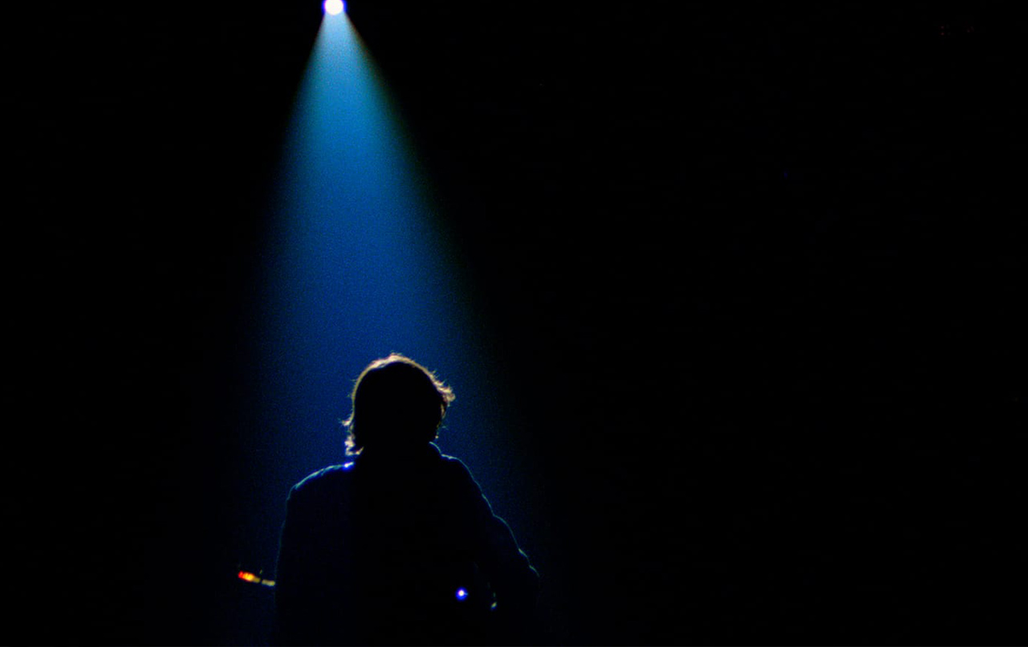
The Last Waltz: Martin Scorsese’s first steps in rock documentary-making

On 25 November 1976, Martin Scorsese filmed Canadian quintet The Band with a view to making a documentary. Bertrand Bouard, journalist and author of a 2020 book about the band published by Le Mot et Le Reste, explores what makes The Last Waltz (1978) one of the most dazzling examples of the genre.
The film's aesthetic beauty
A lot has to do with the decision to use 35 mm film. Martin Scorsese had studied the way the band moved around on stage, and to compensate for how static the musicians were, he opted for fairly sweeping and precise camera movements that he choreographed ahead of time. He also examined the band's lyrics to create a kind of symbiosis between style and substance. The gig closes with a tracking shot as the band wraps up with a fairly sad waltz. Because this was a farewell concert, the movement creates the sense of something disappearing forever more. Also, Scorsese deliberately ensures that the audience doesn't come into view, meaning each viewer can make the concert their own. That's what makes this film unique.
An introduction to the little-known The Band
This is an American-Canadian band that not many people have heard of. They took rock back to its more rural roots, in contrast to the psychedelic tastes of the times. The Band was all about cool, calm, collected musicality and sobriety, it had three exceptional vocalists (Levon Helm, Richard Manuel et Rick Danko) and recorded its albums live. All the musicians could play several instruments, too. This gig was the last time they all played together. The guitarist, Robbie Robertson, decided to break the band up, because he felt the other musicians' drug use was putting their lives at risk. They didn't all agree, and drummer Levon Helm in particular was very much against The Last Waltz.
A cast that ties the documentary together
Eric Clapton, Van Morrison, Joni Mitchell, Neil Young, and icons such as legendary bluesman Muddy Waters played at the concert. The other star guest was Bob Dylan – that the group had notably accompanied on tour in 1966 -, who played four songs with The Band. Before heading out on stage, he refused to be filmed, because his own film was in the works and he felt The Last Waltz would be competition. It was San Francisco promoter Bill Graham who was tasked with negotiating with Dylan, and got his approval to film two of the four songs in exchange for rights to review the material in which he appears. At the time, many saw this concert as a swan song, the dying cry of a generation that was passing on the torch.
Martin Scorsese's first taste of rock documentary-making
The starting point for The Last Waltz was Mean Streets (1973), the director's third film. He used a lot of rock music in its soundtrack, which was very popular with rockers. In fact, Robbie Robertson had really enjoyed the movie, and when he decided to put on this farewell concert and film it, he instantly thought of Martin Scorsese. Jonathan Taplin, one of Mean Streets' producers, The Band's former tour manager, actually arranged the meetings between Scorsese and Robertson. Scorsese was a little hesitant, because at the time he was filming New York, New York (1977) with Robert De Niro and Liza Minelli, and had signed an exclusivity agreement, and so he worked on the project behind his producer's back. This was a very testing challenge for him, and he emerged completely drained from this time in his life when he was working on two films simultaneously. No other filmmaker of his generation captured rock on film so beautifully.


